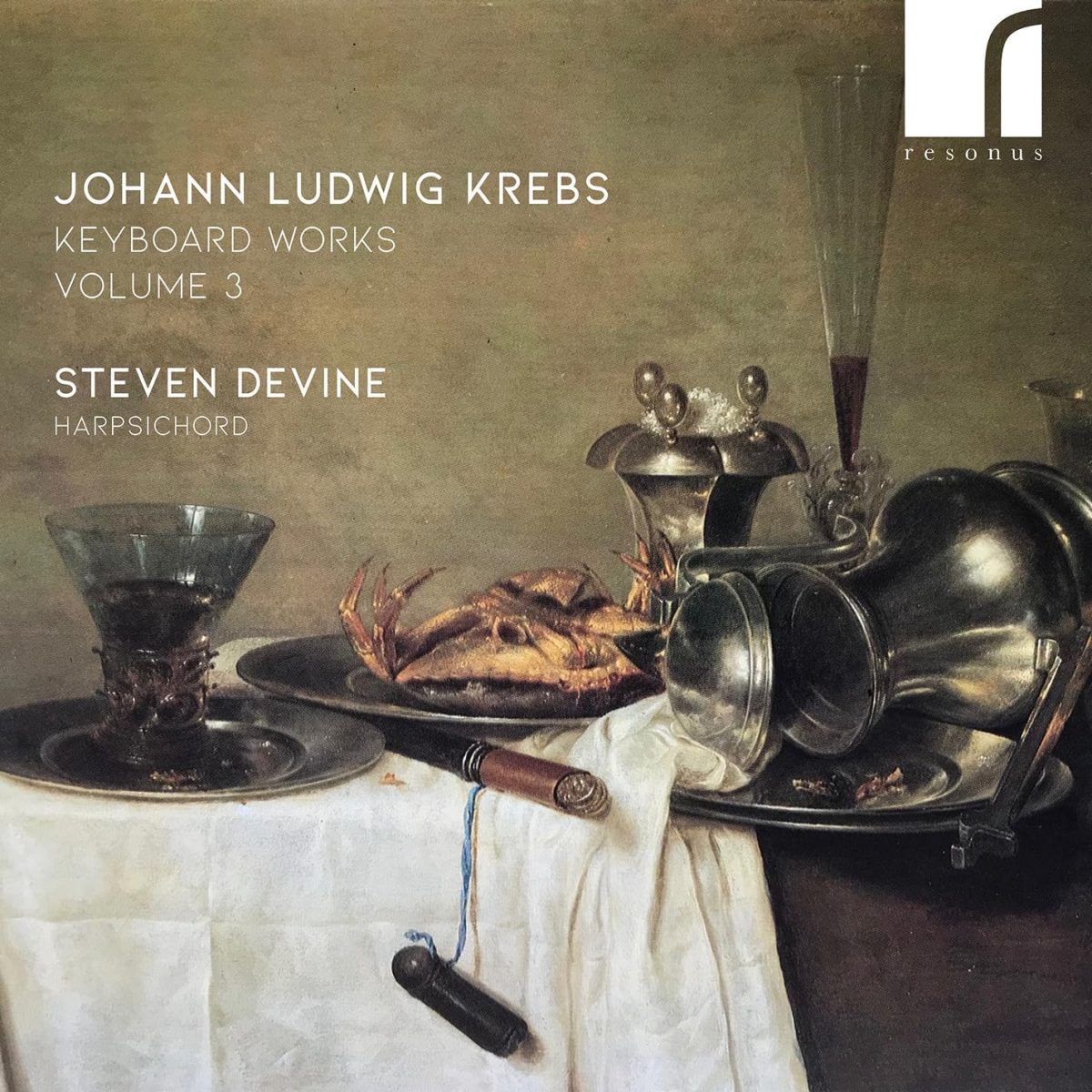Steven Devine harpsichord
77:30
resonus RES10329
Steven Devine continues his highly successful series of recordings of the complete surviving keyboard music of Krebs, a favoured pupil of J. S. Bach at Leipzig who went on to settle in nearby Altenburg. As well as the substantial 6th partita, this volume includes six sonatas which only reappeared in 1999 in Kyiv, the manuscript having been moved from Berlin during the Second World War; this is their first appearance on disc, in Devine’s own edition. In a standard three-movement Italian form, they show Krebs revelling in the new galant style. More predictable than those of his contemporary, CPE Bach, these sonatas make a delightful listening experience, relying on logical sequences and echo effects, with some resonances of Handel’s keyboard writing. Devine has registered them expertly, bringing out both sequences and echoes and wearing his virtuosity very lightly. He revels in these contrasts and plays throughout with great versatility and verve.
The sixth partita, one of only three surviving from a presumed set of six, shows a fascinating mixture of styles and is a reminder that, although we now see Bach’s partitas as iconic, other versions were available. There are reminders of the 17th-century toccatas and ricercars of Froberger in the Prelude, echoes of Handel elsewhere, while the chromatic quirkiness of the Sarabande suggests C. P. E. Bach. There are added galanterien which give a nod to those of J. S. Bach. With ten movements in total, this work is a compendium of possibilities, all expertly exploited by Devine. The two surviving sources for the work vary considerably, pointing to continued revision, and the playing here brings out all the possibilities inherent in Krebs’s treatment of the various dance movements.
Devine plays throughout on a double-manual harpsichord by Colin Booth after a single-manual by Johann Christof Fleischer (Hamburg, 1710), the same instrument he used for the previous volumes in the series and one which suits this music admirably. His control of the instrument allows the listener to have complete confidence in the playing and in the interpretation. This recording is definitely to be highly recommended.
Noel O’Regan
